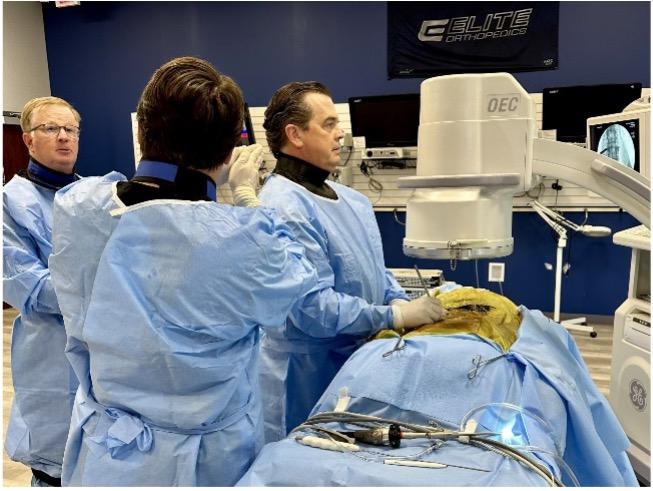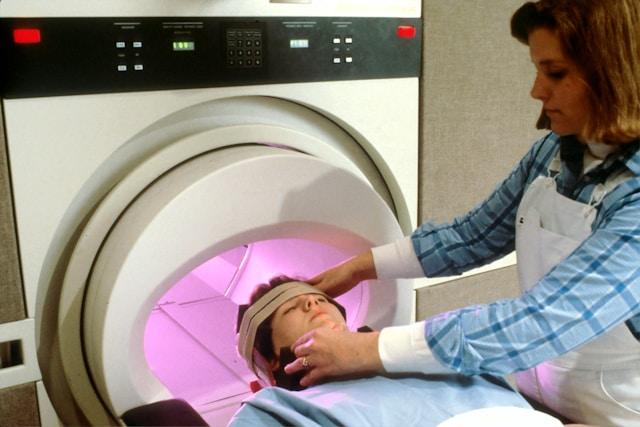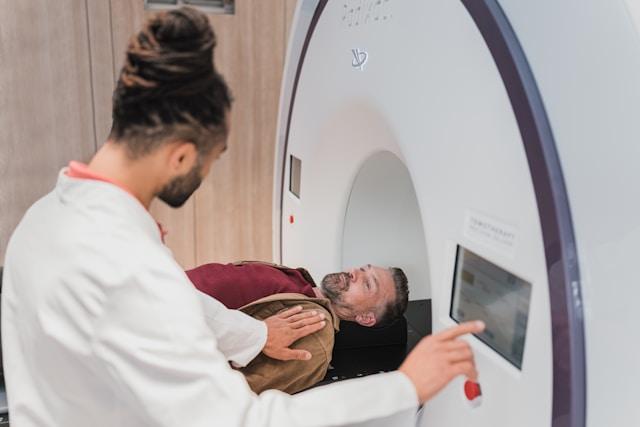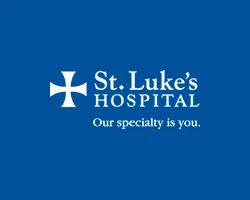-
-
What are the common risk factors for developing Meralgia Paresthetica?
-
What are some conservative measures for managing Meralgia Paresthetica symptoms?
-
When is surgical intervention considered for Meralgia Paresthetica?
-
How should one prepare for medical appointments related to Meralgia Paresthetica?
-
Meralgia paresthetica, a condition causing tingling or numbness in the thigh due to nerve issues, is often overlooked despite its impact on daily life. This blog post sheds light on the causes, symptoms, and treatment options for this nerve disorder. Historical records show that meralgia paresthetica was first described in the 19th century, with advancements in medical understanding leading to more effective management strategies today. Understanding the historical context of this condition can provide insight into its prevalence and significance in modern healthcare practices.
Key Takeaways
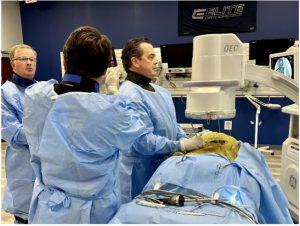
-
Awareness is Key: Understanding meralgia paresthetica, its risk factors, and symptoms can help in early identification and management.
-
Consult a Healthcare Provider: If you suspect meralgia paresthetica, seek medical advice for proper diagnosis and treatment.
-
Consider Conservative Approaches: Non-invasive treatments like physical therapy and lifestyle modifications can often alleviate symptoms effectively.
-
Medication Guidance: Discuss medication options with your doctor to find the most suitable pain relief and management plan.
-
Surgery as a Last Resort: Surgical interventions should be considered after exhausting conservative treatments and under the guidance of a specialist.
-
Prepare for Appointments: Make the most of your medical visits by noting down symptoms, questions, and concerns to ensure comprehensive care.
Understanding Meralgia Paresthetica
Definition and Overview
Meralgia paresthetica is a condition characterized by the compression of the lateral femoral cutaneous nerve. This compression results in symptoms like tingling, numbness, and pain in the outer thigh area. People affected by this condition may experience limitations in mobility and daily activities due to the discomfort it causes.
Common Symptoms
Individuals with meralgia paresthetica often experience burning pain and heightened sensitivity in the thigh region. These symptoms typically manifest on one side of the body and tend to worsen with physical activity. The persistent nature of these symptoms can significantly impact an individual’s quality of life and hinder their ability to perform routine tasks.
-
Burning pain
-
Increased sensitivity
-
Worsening with activity
Potential Causes
Meralgia paresthetica can be caused by various factors, including the compression of the lateral femoral cutaneous nerve due to issues such as obesity, wearing tight clothing, or during pregnancy. Nerve damage resulting from conditions like diabetes or trauma can also lead to the development of meralgia paresthetica. Identifying the root cause of the condition is crucial for devising effective treatment strategies and managing the symptoms effectively.
-
Compression of the lateral femoral cutaneous nerve
-
Obesity or tight clothing
-
Pregnancy-related pressure on the nerve
-
Nerve injury from diabetes or trauma
Identifying Risk Factors
Lifestyle and Occupation
Lifestyle choices play a crucial role in the development of meralgia paresthetica. Factors such as weight gain can put excess pressure on the nerves in the groin area, leading to symptoms like tingling or numbness. Individuals involved in occupation-related activities that require prolonged standing or wearing tight clothing may also experience nerve compression.
Making lifestyle modifications is essential for managing meralgia paresthetica. Individuals should focus on maintaining a healthy weight through regular exercise and a balanced diet. Avoiding activities that involve prolonged pressure on the groin area, such as sitting for extended periods or wearing heavy tool belts, can help reduce symptoms.
To alleviate the impact of meralgia paresthetica on daily life, individuals can consider simple adjustments. This includes taking frequent breaks during long periods of standing or sitting, using ergonomic tools to reduce strain on the body, and incorporating stretching exercises into their daily routine.
Health Conditions
Certain health conditions can increase the risk of developing meralgia paresthetica. For instance, individuals with diabetes are more prone to nerve damage due to fluctuations in blood sugar levels. Obesity is another significant risk factor, as excess body weight can lead to fluid accumulation around the nerves, causing compression and subsequent symptoms.
The relationship between obesity, fluid accumulation, and other health conditions underscores the importance of managing these underlying issues. By controlling blood sugar levels through medication and lifestyle changes, individuals with diabetes can reduce the risk of nerve damage and alleviate meralgia paresthetica symptoms. Similarly, adopting a healthy diet and engaging in regular physical activity can help address obesity-related factors contributing to nerve compression.
Diagnosing the Condition
Medical History Review
Conducting a thorough medical history review is crucial in diagnosing meralgia paresthetica. Healthcare providers delve into past surgeries, injuries, and existing medical conditions to pinpoint potential risk factors for nerve compression. By understanding a patient’s medical background, practitioners can tailor treatment plans effectively. This review aids in identifying how previous health events may have contributed to the development of meralgia paresthetica symptoms.
Healthcare providers assess medical history to uncover clues that could explain nerve compression leading to meralgia paresthetica. Past surgeries or injuries near the groin area may have triggered nerve issues. Existing medical conditions like diabetes or obesity can also heighten the risk of nerve compression. By piecing together these details, healthcare professionals gain insights into the underlying causes of thigh pain and tingling sensations.
In diagnosing meralgia paresthetica, healthcare providers play a pivotal role in evaluating a patient’s medical history. They meticulously analyze past health events to connect the dots between nerve compression and symptom manifestation. This comprehensive assessment allows for personalized treatment plans that address the root cause of meralgia paresthetica, ensuring effective management and relief for individuals experiencing this condition.
Physical Examination
During a physical examination, healthcare providers focus on specific components to diagnose meralgia paresthetica accurately. They test sensation in the affected thigh to determine any abnormalities or loss of feeling. Reflex assessments help identify nerve dysfunction that may be causing thigh pain and discomfort.
Healthcare providers conduct specific tests as part of the physical examination to evaluate nerve function in individuals with suspected meralgia paresthetica. These tests aim to rule out other potential causes of thigh pain and confirm the diagnosis. By examining reflexes, sensation, and muscle strength in the affected area, healthcare professionals gather essential data for an accurate assessment.
A comprehensive physical examination is essential in confirming a diagnosis of meralgia paresthetica. It enables healthcare providers to observe firsthand the symptoms experienced by patients, aiding in accurate diagnosis and appropriate treatment planning. Through a thorough evaluation of reflexes, sensation, and muscle function, practitioners can validate the presence of nerve compression contributing to meralgia paresthetica symptoms.
Additional Tests
Healthcare providers may recommend additional tests such as nerve conduction studies or imaging tests to confirm a diagnosis of meralgia paresthetica definitively. Nerve conduction studies help assess nerve function and pinpoint areas of compression contributing to symptoms. Imaging tests like MRI scans provide detailed visuals of the affected area, aiding in precise diagnosis and treatment planning.
These additional tests play a crucial role in guiding treatment decisions for individuals with meralgia paresthetica. By identifying the exact location and extent of nerve compression through diagnostic tests, healthcare providers can tailor interventions to alleviate symptoms effectively. Moreover, these tests assist in monitoring the progression of meralgia paresthetica over time, enabling adjustments to treatment plans as needed.
Exploring Treatment Options
Conservative Measures
Conservative treatment options play a crucial role in managing meralgia paresthetica. Lifestyle modifications, such as avoiding activities that exacerbate symptoms and weight management, can significantly alleviate discomfort. Physical therapy is beneficial for strengthening muscles and improving flexibility, reducing nerve compression. Incorporating stretching exercises can enhance mobility and reduce nerve irritation. Activity modification, like avoiding prolonged standing or sitting, can prevent symptom aggravation.
-
Pros:
-
Non-invasive approach
-
Improves overall nerve function
-
-
Cons:
-
Requires consistent effort and commitment
-
Medication Use
Medications serve as effective tools in alleviating meralgia paresthetica symptoms. Pain relievers help manage discomfort, while anti-inflammatories reduce inflammation around the affected nerve. Nerve pain medications target specific pathways to alleviate sensitivity and pain associated with the condition. Consulting healthcare providers is essential to determine the most suitable medication regimen and monitor any potential side effects.
-
Pain relievers
-
Anti-inflammatories
-
Nerve pain medications
Surgical Interventions
For individuals with severe or persistent meralgia paresthetica symptoms, surgical interventions may be necessary. Nerve decompression surgery aims to release pressure on the nerve, restoring normal sensation and function. Neurectomy involves removing the affected nerve to alleviate symptoms and improve quality of life. While surgical interventions carry risks, they offer long-term benefits by addressing the root cause of nerve compression.
-
Different surgical procedures:
-
Nerve decompression
-
Neurectomy
-
Conservative Measures Detailed
Lifestyle Changes
Making lifestyle changes is crucial in managing meralgia paresthetica. Maintaining a healthy weight can alleviate pressure on the lateral femoral cutaneous nerve, reducing symptoms. Avoiding activities that worsen nerve compression is also essential for symptom relief.
Ergonomic adjustments play a significant role in mitigating meralgia paresthetica symptoms. Ensuring proper posture at work and during daily activities can help reduce pressure on the nerve. Simple modifications like using ergonomic chairs and desks can make a substantial difference in alleviating discomfort.
Individuals with meralgia paresthetica should be encouraged to take proactive steps in modifying their lifestyle. Engaging in regular exercise, such as low-impact activities like swimming or cycling, can improve overall health and reduce nerve compression. By adopting a health-conscious lifestyle, individuals can effectively manage their condition and promote long-term well-being.
Physical Therapy
Physical therapy plays a vital role in improving strength and flexibility in individuals with meralgia paresthetica. Specific exercises targeting the affected area can help reduce nerve compression and enhance mobility. Stretching exercises aimed at loosening tight muscles around the hip can also provide relief from symptoms.
Tailored physical therapy programs are beneficial for addressing individual needs related to meralgia paresthetica. These programs focus on targeted exercises to strengthen the core muscles and improve posture, ultimately reducing pressure on the nerve. Techniques such as manual therapy and ultrasound may be incorporated to further alleviate symptoms and promote recovery.
A structured physical therapy regimen not only aids in reducing pain but also enhances overall function and quality of life for individuals with meralgia paresthetica. By working closely with a physical therapist, patients can develop a personalized treatment plan that caters to their specific symptoms and goals.
Medications Explained
Pain Relief Options
Managing discomfort from meralgia paresthetica involves exploring various pain relief methods. Utilize ice packs to reduce inflammation and numb the affected area. Heat therapy can also help by relaxing muscles and increasing blood flow. Consider using topical analgesics to alleviate localized pain.
Alternative therapies offer additional options for pain management. Acupuncture targets specific points to relieve nerve pain, while massage helps relax muscles and improve circulation. Transcutaneous electrical nerve stimulation (TENS) uses mild electrical currents to disrupt pain signals, providing relief for individuals with meralgia paresthetica.
Empower those with meralgia paresthetica to experiment with different pain relief strategies. What works for one person may not work for another, so it’s essential to explore and find the most effective approach for individual symptoms.
Prescription Medicines
Prescription medications play a crucial role in managing meralgia paresthetica symptoms. Anticonvulsants like gabapentin and pregabalin help stabilize nerve activity, reducing pain signals. Antidepressants such as amitriptyline can modify chemical imbalances in the brain, alleviating neuropathic pain. Nerve pain medications like duloxetine target both physical and emotional aspects of pain, providing comprehensive relief.
These medications modulate pain signals, improve nerve function, and reduce neuropathic pain associated with meralgia paresthetica. Adhering to prescribed medication regimens is vital for optimal treatment outcomes. Regular follow-up appointments with healthcare providers ensure proper monitoring and adjustment of medications based on individual responses.
Surgical Interventions Overview
Types of Surgery
Nerve decompression surgery and neurectomy are the two primary surgical options for meralgia paresthetica. Nerve decompression surgery aims to release pressure on the nerve causing symptoms, while neurectomy involves removing part of the affected nerve. The goal of these procedures is to alleviate nerve compression, reducing pain and restoring sensation in the thigh.
The outcomes and recovery expectations vary between the two surgeries. Nerve decompression surgery typically results in quicker symptom relief and faster recovery compared to neurectomy. However, neurectomy may provide more long-term pain relief for some patients. It’s essential for individuals to discuss with their healthcare providers to understand the specific benefits and risks associated with each procedure.
-
Pros:
-
Nerve decompression surgery offers faster symptom relief.
-
Neurectomy may provide long-term pain relief for some patients.
-
-
Cons:
-
Neurectomy carries a higher risk of permanent numbness in the thigh.
-
Recovery Process
Following surgical interventions for meralgia paresthetica, patients undergo a structured recovery process. Post-operative care includes monitoring surgical incisions for signs of infection, managing pain effectively, and attending follow-up appointments with healthcare providers. Rehabilitation programs focusing on strengthening exercises may be recommended to aid in nerve healing and restore mobility in the affected area.
The recovery timeline varies for each individual, but most patients can expect an improvement in symptoms within a few weeks after surgery. Nerve healing takes time, and gradual progress towards normal sensation and function in the thigh is expected over several months. Patients are advised to adhere to their healthcare provider’s instructions diligently to optimize their recovery outcomes.
-
Post-operative care:
-
Monitor surgical incisions for signs of infection.
-
Manage pain effectively with prescribed medications.
-
Attend follow-up appointments with healthcare providers.
-
-
Rehabilitation:
-
Engage in strengthening exercises as recommended.
-
Gradually increase physical activity under medical guidance.
-
Preparing for Medical Appointments
Questions to Ask
-
What are the treatment options available for meralgia paresthetica?
-
What are the potential risks associated with each treatment option?
-
What are the expected outcomes of the recommended treatment plan?
Compile a list of questions for healthcare providers, focusing on treatment options, risks, and outcomes. Open communication is crucial to address concerns, clarify plans, and make informed decisions. It’s essential to empower individuals to advocate for their health by actively participating in discussions.
What to Expect
-
Set realistic expectations regarding symptom improvement timelines and recovery milestones.
-
Discuss potential challenges or setbacks during the treatment process.
-
Empower individuals with knowledge about the meralgia paresthetica journey from diagnosis to recovery.
Individuals undergoing treatment should be aware of symptom improvement timelines and recovery milestones. Addressing challenges effectively and understanding the journey can help manage expectations. Empowering patients with information about potential setbacks and recovery stages is vital.
Final Remarks
In understanding meralgia paresthetica, identifying risk factors, diagnosing the condition, exploring treatment options, and preparing for medical appointments, you’ve gained valuable insights. By delving into conservative measures, medications, and surgical interventions, you now have a comprehensive grasp of managing this condition effectively. Remember, early detection and a proactive approach are key to alleviating symptoms and enhancing your quality of life. Stay informed, communicate openly with your healthcare provider, and prioritize your well-being. Empower yourself with knowledge to navigate this journey confidently.
Frequently Asked Questions
What are the common risk factors for developing Meralgia Paresthetica, such as thigh tingling, anterolateral thigh pain, peripheral nerve entrapments, and cutaneous nerve entrapment?
Meralgia Paresthetica risk factors include obesity, wearing tight clothing, pregnancy, and occupations that involve prolonged standing or walking. These factors can compress the nerve responsible for the condition.
How is Meralgia Paresthetica diagnosed?
Diagnosis of Meralgia Paresthetica involves a physical exam, discussing symptoms, and may include imaging tests to rule out other conditions. A thorough evaluation by a healthcare professional is crucial for an accurate diagnosis.
What are some conservative measures for managing Meralgia Paresthetica symptoms, such as thigh tingling and nerve issues in the painful area of the femoral nerve?
Conservative measures for Meralgia Paresthetica include weight loss, wearing loose clothing, avoiding activities that worsen symptoms, and physical therapy. These non-invasive approaches can help alleviate discomfort and improve quality of life.
When is surgical intervention considered for Meralgia Paresthetica?
Surgical intervention for Meralgia Paresthetica is considered when conservative treatments fail to provide relief. Procedures such as nerve decompression surgery may be recommended by healthcare providers to address persistent symptoms and improve nerve function.
How should one prepare for medical appointments related to Meralgia Paresthetica?
Before medical appointments for Meralgia Paresthetica, it’s helpful to jot down symptoms, questions, and concerns. Bringing relevant medical history and being prepared to discuss lifestyle factors can assist healthcare providers in making an accurate assessment and providing tailored recommendations.

